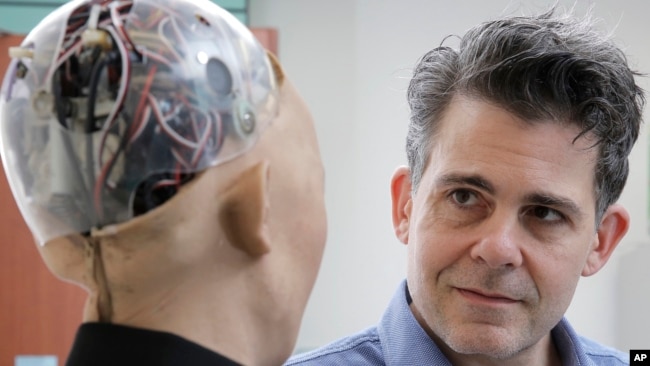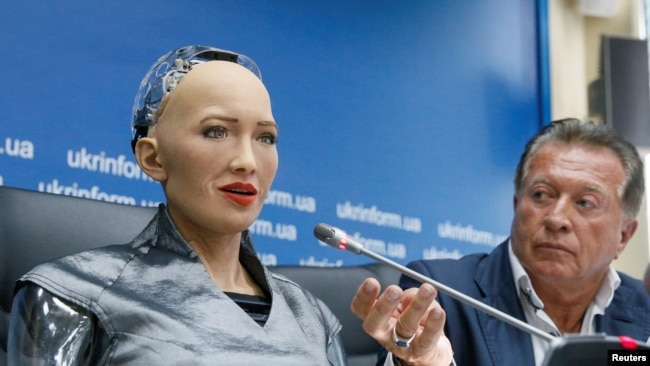THE WORLD NEEDS MORE INTELLIGENCE

This is from Sanctuary.AI's own words:
Sanctuary is a mission driven company.
Our mission is to create robots that understand the world like we do.
Generally intelligent robots would be able to do most work, which would change the global economy. But success in creating general intelligence means a lot more than even this.
Understanding intelligence is not just a technological problem. It is a quest to unlock the wellspring from which all aspects of the human experience flows. Understanding how our minds work is the most important piece of knowledge we can gain. It is more important and fundamental than the physical laws of the universe. Everything we are, everything we can learn, everything we experience, resides within our minds.

JOIN US
Building general purpose robots, capable of understanding the world the way we do, is a very exciting and challenging problem.
Working at Sanctuary means working at the bleeding edge of human knowledge, with team mates who are world leaders in their fields.
At Sanctuary you will be on the front lines of the global race to be the first to artificial general intelligence.
Company Aims to Produce Thousands of Humanoid Robots in 2021

Hanson Robotics says four different humanoid models will start leaving factories during the first half of the year. One of the four is a robot named Sophia, which has received worldwide attention in recent years for looking and speaking in a very human-like way.
The company’s founder and CEO, David Hanson, told Reuters the COVID-19 pandemic has increased demand for robots designed to assist and engage with humans. “The world of COVID-19 is going to need more and more automation to keep people safe.”
He noted that in the past, many of the company’s robots were built by hand. But now, Hanson Robotics is beginning to expand its manufacturing operations.
Hanson said there are currently 24 models of Sophia, which will be used as a basis for creating “many other kinds” of models. While not providing an exact number, Hanson said the company aims to sell “thousands” of robots by the end of 2021.
The company says it plans to market its humanoid robots as helpful assistants in the healthcare field. For example, they can be used to take temperature readings to identify possible sickness or perform physical exercises with older people.
Such “social robots” are powered by machine learning methods and artificial intelligence (AI). They use cameras and sensors to recognize human faces and activities. The robots are built with tools to help them develop their own form of social and emotional intelligence over time.
During a demonstration at the company’s lab, one of the Sophia models identified some of the activities it could assist humans with.
“Social robots like me can help take care of the sick or elderly in many kinds of healthcare and medical uses.”
Hanson said he believes robotic solutions to the pandemic are not limited to healthcare. He said the company’s robots are so human-like, they could also serve the public in retail settings or in the airline industry.
The humanoids “can be so useful during these times where people are terribly lonely and socially isolated,” Hanson said.
“I can help communicate, give therapy and provide social stimulation, even in difficult situations.”
Johan Hoorn is a social robotics professor at Hong Kong’s Polytechnic University. His research has included work on Sophia. He said that, although the technology is still developing, the pandemic could speed up relationships between robots and humans.
“I can infer the pandemic will actually help us get robots earlier in the market because people (will) start to realize that there is no other way,” Hoorn said.
Products from other major developers in the industry are helping fight the pandemic as well. SoftBank Robotics’ humanoid robot Pepper was deployed in Europe to identify people who were not wearing face coverings. In China, robotics company CloudMinds helped set up a robot-run field hospital for COVID-19 patients in Wuhan.
The use of robots was already on the rise before the pandemic. The International Federation of Robotics said in a report last year that worldwide sales of professional-service robots had jumped 32 percent between 2018 and 2019.
The question is will you be able to distinguish between the robot and the biological editing enhancement tool known as Zombie *V*?
____________________________________________________________

Celeste Solum is a broadcaster, author, former government, organic farmer and is trained in nursing and environmental medicine. Celeste chronicles the space and earth conditions that trigger the rise and fall of modern & ancient civilizations, calendars, and volatile economies. Cycles are converging, all pointing to a cataclysmic period between 2020 to 2050 in what many scientists believe is an Extinction Level Event.
Tracking goods and people will be a part of managing the population during this convergence.
-
Backstories on tracking
- Technologies
- Infrastructure
- Diseases, Testing, Vaccinations, and Sensors (including nCov and the new Phytophthora ~the plant-destroyer
-
Experiences
Website:
https://shepherdsheart.life/blogs/news/
GenSix, Keynote Speaker, True Legends, Ancient Cataclysms & Coming Catastrophes
https://celestialreport.com
https://www.facebook.com/ShepherdessCeleste
Books:
Electromagnetic Radiation Protection Solutions
Inspirational Homestead Recipes
Videos: Celestial Report, Special Broadcasts, Breaking News by Subscription

